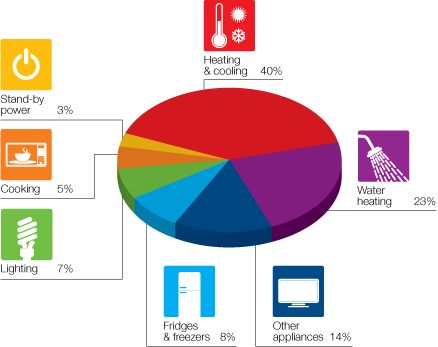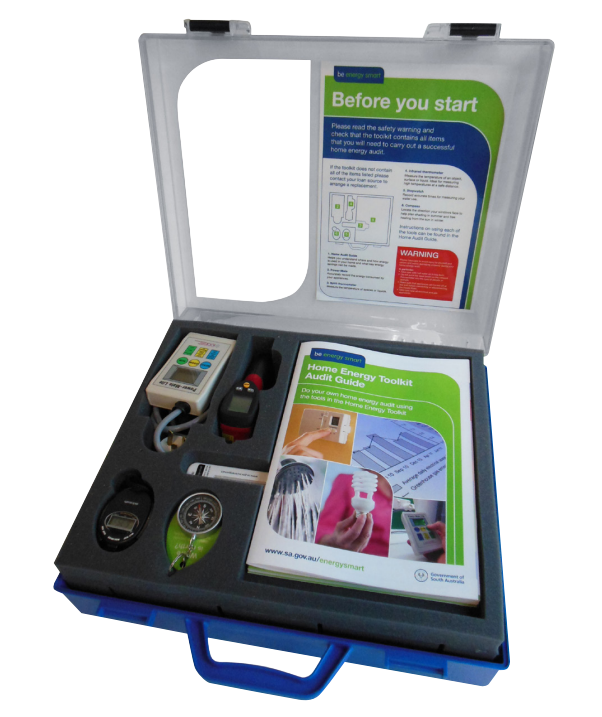Reduce Energy Use at Home
Saving Energy
Taking action to reduce your energy use through making changes around the home can help both your finances and the environment.
Although South Australia is increasing its use of renewable energy sources, a portion of our energy still comes from fossil fuels due to our connection to the National Electricity Market (NEM) grid and reliance on natural gas.
By making conscious efforts to reduce our energy use in our daily lives, at home, school and work, we can effectively lower harmful gases emitted during the burning of these fuels. This not only benefits the environment but also leads to cost savings for both families and businesses.
Understanding your energy usage is important, because it allows you to identify inefficiencies and areas where you can cut costs!
Here is a breakdown of the energy use in an average Australian home:

Resilient East Factsheet #10 Plug in: to energy monitoring provides an outline of how to monitor energy usage in real time in your home.
There are some simple things that you can do to save money on your various energy bills. Consider how you design your new house, appliances you buy, opportunities for natural heating/cooling, and how you operate your business.
Taking control of your energy use and bills is easy. Discover what you can do to save energy and manage your energy bills.
Find out what your energy use is by doing a simple home energy audit:
Do a home energy audit - SA Government Website
To help you do this at home a Home Energy Audit Tool Kit available to borrow from the Campbelltown Library.
Alternatively you could get a government-accredited assessor to provide a Residential Efficiency Scorecard.
Once you've completed your Home Energy Audit, here are some other resources with tips for next steps:
Building a new home or extending an existing home is an excellent opportunity to include. These features will make your home more comfortable, environmentally friendly and can significantly reduce your ongoing energy costs.
Checklists for new and existing homes can help simplify the process;
Existing Homes: Creating an Energy Efficient Home
New Homes: Efficiency by Design
The Resilient East 2023 Sustainable Homes Expert Webinars are another great place to start, the series covers topics including; Energy Efficiency in Summer and Winter, How to Design or Retrofit your Home and Going All Electric.
There are lots of other resources out there with information for new and retrofitting homes to be energy efficient:
Energy efficient and eco friendly home design - SA Government Website
Reducing the amount of energy your business uses could help your bottom line.
Energy efficiency information and programs for businesses - SA Government Website
There is a large array of retail energy providers that offer a range of services and discounts. An easy way to compare suppliers and find the best deal for your circumstances is available on the Energy Made Easy website.
Energy Made Easy - Australian Government Website
Confused about what your bill is telling you or have an unusually high bill?
See if you’re eligible to receive a rebate when purchasing energy efficient materials and appliances. You may be eligible if you’ve installed insulation, secondary glazing, new energy efficient heating and cooling appliances, water heating, lighting, fridges, washing machine, stand by power controllers and more!
Check Rebate Eligibility - Retailer Energy Productivity Scheme Website

